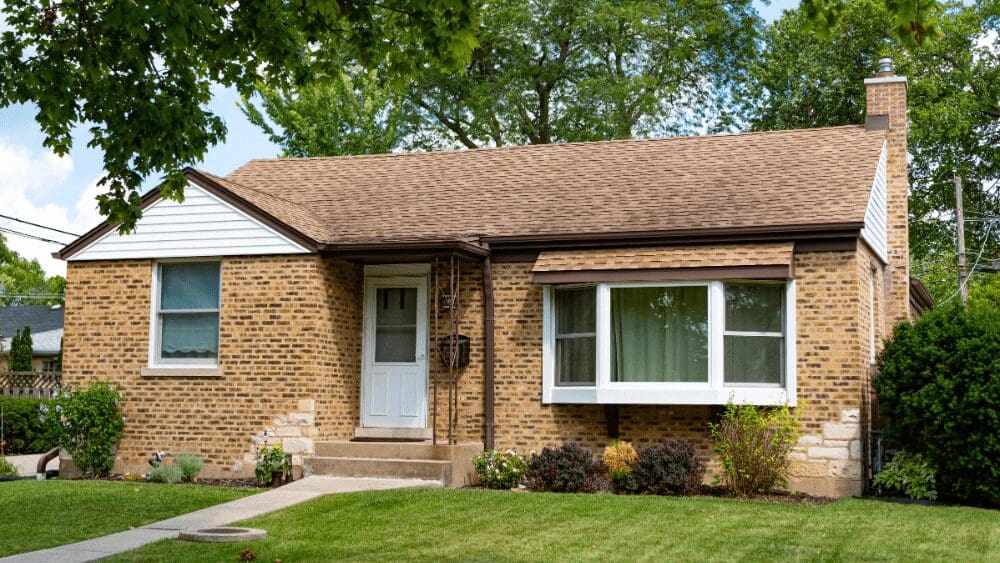
The weather’s getting warmer, the trees are greening and blooming, and the neighbors are firing up their barbecues — it’s finally deck season. But when you head outside to spruce up your space, you can’t help but notice that your own deck has lost its luster. Maybe the color isn’t as rich or vibrant as you remember, or the stain is looking patchy and uneven. Either way, it’s time to stain your deck. Rick Fuller, a top real estate agent in Antioch, California, says that cleaning and staining a deck is one of the easiest ways for a seller to improve the home’s outdoor presentation. “Improving curb appeal and landscaping has one of the highest rates of return,” he says. “Often, decks fit into the curb appeal category.” If you’re on a tight budget or just love DIY, staining a deck is a fairly easy project to tackle. The key is to have a detailed game plan at the ready. And, lucky for you, we’ve prepped your step-by-step guide on how to stain a deck. It’s chock-full of pro tips, product recommendations, and insight from experts who could probably do the job blindfolded (not recommended).
Paige NeJame is the owner of CertaPro Painters, which stains and refinishes dozens of decks in the Boston area each year. She recommends gathering the following supplies to pull off a DIY deck stain: NeJame estimates an approximate cost of $200 for all materials. Not bad, considering homeowners pay $540 to $1,050 on average for professional deck staining. Pro tip: If you live in a neighborhood where multiple people have decks that require regular maintenance, it might make sense to share the cost of purchasing some of the bigger-ticket items, like a power sander and pressure washer, and then take turns using them as needed. Alternatively, you can rent power tools from hardware stores like Home Depot or Lowes. Before you bust out the brushes, start with a blank canvas. Remove all furniture, grills, potted plants, and other items from the deck. Next, sweep off any leaves, loose dirt, and debris. If there is any landscaping surrounding or underneath the deck, cover it with plastic sheeting or tarp to protect the plants from pressure washing and cleaning products. Pro tip: Use a putty knife to remove any leaves, twigs, or other debris that are stuck in between the deck boards. Start planning prep work by evaluating your deck’s age and condition. If your deck is relatively new, the prep will probably be minimal. If it’s an older deck that’s showing signs of wear, discoloration, or deterioration, you’ll have to do some extra work to make sure the stain is applied correctly. The first step in determining the extent of prep work is to inspect your deck, keeping an eye out for these red flags: Pro tip: For a complete list of what to look for, use this 10-Point Consumer Checklist from the North American Deck and Railing Association (NADRA). Unless your deck is new, you should thoroughly clean it before you sand and stain. There are dozens of effective deck cleaners that you can buy online or at your local hardware store. Check out these top-rated products: After mixing the cleaning solution according to the instructions, apply it to the deck with a roller or a sprayer. Home Depot recommends letting the cleaner sit for around 15 minutes, spraying the deck with water as needed to keep the wood wet while the cleaner does its job. Pro tip: While waiting for the cleaner to soak into the wood, check for mill glaze, a glossy-like film that prevents the stain from permeating. The telltale sign of mill glaze is if the water beads up and doesn’t soak into the wood. You can remove this film by lightly sanding or scrubbing the area until the water is absorbed. After the 15 minutes is up, use a scrub brush (like this top-rated long-handled brush from Amazon) to work the cleaner into the wood. Once you’ve removed all dirt and residue, rinse the deck with a garden hose. If your deck is large or particularly dirty, consider renting a pressure washer to blast away the grime faster than a manual brush. If you’ve never used a pressure washer before, check out these tips before getting started. Allow the deck to dry completely — usually between 24 and 48 hours — before moving on to the next step. Sanding isn’t a hard-and-fast requirement, but if your deck still has a rough texture and you prefer a smoother, silkier surface, you may want to sand the wood before applying the stain. This process removes loose wood fibers from the deck so the wood can more easily absorb the stain. The easiest way to sand a deck is with a random orbital deck sander. If you can’t find one to borrow, you can rent one from your local hardware store. Before getting started, check out this quick tutorial from Ace Hardware. Pro tip: Not sure if your deck needs to be sanded? Try the “tape test.” Affix a strip of tape on the deck and then pull it off. If wood fibers come off with the tape, it could benefit from sanding.
Now, it’s time for the most important step in this project: choosing a stain. HomeAdvisor breaks down deck stains into four main categories: When selecting a stain type, weigh in how it will look over your deck’s current stain. If you have a clear or semi-transparent stain, you can apply that same type again or opt for a solid-color stain. But if you already have a solid stain, you can’t go back to clear or semi-transparent without first removing the existing stain. Below are some of the overall top-rated deck stains, according to testing by Consumer Reports: CertaPro Painters’ go-to stain is Benjamin Moore’s Arborcoat Translucent Oil Stain. “Most people like letting the wood grain show through, but you can choose a stain with more pigment if you want more coverage,” says NeJame. When choosing a stain color, consider the color palette of your house’s exterior — the trim, siding, and other elements — and the surrounding landscaping. Ideally, your deck should blend in with your home and not distract from it. Top agent Fuller often sees homeowners staining some sections of the deck and painting others for contrast. “They might paint the vertical elements, like the rails and handrail, but keep the lateral wood stained,” he says. “For example, a white paint contrasted with the transparent stain really brings out the beauty of the natural wood grain.” Pro tip: Before you start staining, be sure to test the stain on a spare piece of wood to make sure you like the result. Weather is a critical factor in the success or failure of a deck staining project. According to Consumer Reports, the best time to stain is after several days of no rain, with at least two more days of dry weather in the forecast. Ideally, the temperature should be no lower than 50°F and no higher than 90°F, with low to average humidity. Pro tip: It’s best to stain in the morning or late afternoon, as direct midday sunlight can cause the stain to dry too quickly, leading to uneven results. For any DIY project, particularly staining a deck, the old adage “many hands make light work” rings true. Recruiting some helpers can help speed up the process and alleviate some of the pressure — not to mention, help you beat the clock if the weather is fickle. Pro tip: If you’re working in tandem, one of you can roll on the stain while the other focuses on spreading out any puddles and making sure it’s applied evenly and consistently. Finally, it’s time for the main event! Follow these steps to ensure a successful application of the stain: Pro tip: One coat is often enough, but if you want a darker color or want to hide imperfections, apply another coat. Wait at least four hours between each coat. “If you don’t periodically maintain your deck, it could eventually start rotting and deteriorate beyond repair, requiring you to replace boards instead of just stain them,” says Fuller. “A poorly maintained deck could also attract pests like termites and cause a safety hazard that could turn off buyers.” How frequently you’ll need to stain your deck depends on the climate where you live, the type of wood your deck is made from, whether or not your deck is covered from the elements, and the type of stain you’re using. As a general rule of thumb, a deck could benefit from a fresh stain every two or three years, but yours could need it more or less often.
Step 1: Gather your supplies
Step 2: Clear the deck
Step 3: Inspect the deck
Step 4: Clean the deck
Step 5: Sand the deck (optional)
Step 6: Select a stain
Types of stains
Best-selling deck stains
Choose one stain or opt for a two-toned style
Step 7: Check the weather before you stain
Step 8: Gather some helpers
Step 9: Apply the stain
Step 10: Restain your deck periodically to keep the wood healthy



